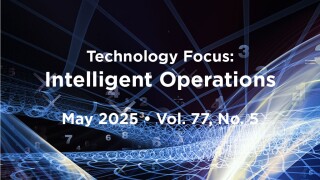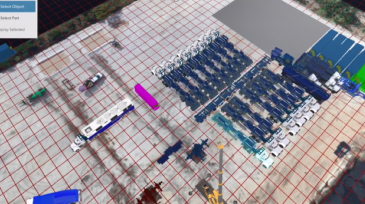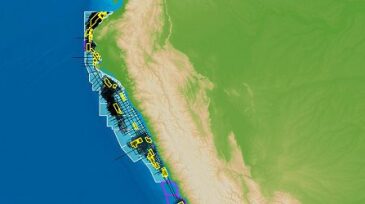Digital oilfield
Weatherford International plc announced a strategic agreement with Amazon Web Services (AWS) to advance the company's digital transformation and drive innovation across the energy sector.
The rapid development of oil and gas intelligent operations depends on artificial intelligence, automation, and data analytics to achieve optimal conditions in oil and gas operations.
The authors of this paper describe a project to develop a virtual sensor to monitor the cooling effect downstream of a subsea choke to avoid hydrate plugs during cold-start operations.
-
Immersive technology on projects such as wellsite planning incorporates XR, drones, and collaboration.
-
Production monitoring requires heightened degrees of precision and efficiency as operations are streamlined and projects are evaluated continuously. This month’s feature focuses on innovative technologies that have been implemented in environments ranging from the Gulf of Mexico to China.
-
This paper describes a virtual metering tool that can monitor well performance and estimate production rates using real-time data and analytical models, integrating commercial software with an optimization algorithm that combines production and reservoir information.
-
This paper discusses the effectiveness of third-generation (Gen3) production-logging-tool (PLT) technology, which uses co-located digital sensors for simultaneous acquisition of flow data to provide the most accurate characterization of the flow condition at each depth surveyed.
-
This paper describes an accurate, three-step, machine-learning-based early warning system that has been used to monitor production and guide strategy in the Shengli field.
-
The seismic-data company has announced the completion of its offshore Peru 2D and 3D seismic data set, consisting of 19 rectified and merged 2D seismic surveys and 21 rectified and merged 3D seismic surveys.
-
In my inaugural column as editor of the Well Testing Technology Focus feature, I want to shine a light on the notable trend among operators of seizing on the tremendous untapped potential that exploration and appraisal wells represent for far-field reservoir characterization and connectivity.
-
This paper describes the use of a downhole temperature-sensor array during a commingled drillstem test (DST) to determine the density of produced fluids accurately.
-
This paper applies a new constrained multiwell deconvolution algorithm to two field cases: a gas reservoir with two producers and an oil reservoir with three producers and one injector.
-
The complete paper describes the shortcomings of traditional well testing methods and the methodology and results of applying wireline-conveyed IPTT in a light-oil reservoir offshore Norway.













